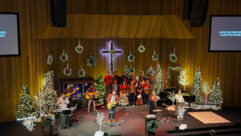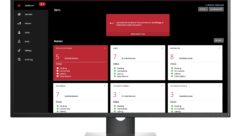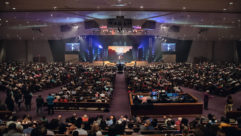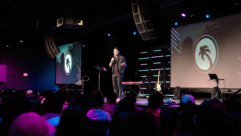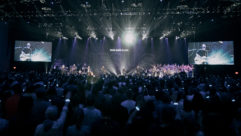
Line Out: Can You Hear the Message?
Jun 1, 2004 12:00 PM,
By Michael Santucci
As an audiologist, I have been working to save hearing in the music and pro-audio industry since the mid-1980s. I’ve promoted the hearing-conservation principle at trade shows, in print media, on television and radio, and with seminars and lectures. During that time, I have seen a genuine shift in awareness of the dangers of loud musical exposures on one’s hearing.
In the ’80s, the prevalent attitude of most music industry personnel was that hearing loss was simply one of those unavoidable side effects of playing live music. Some even bragged about their hearing loss as if it should be worn like a badge of honor. The few who had genuine concerns could only employ the use of foam-type plugs that muffled the sound. So I asked myself back then, as I still do today, “Why don’t musicians and audio professionals protect their hearing?” Here are my top 5 reasons from most likely to least:
- They feel there would be too much compromise to music sound quality.
- They are unaware of good hearing-protection tools or where to get them.
- They can’t afford a hearing test or protection.
- They don’t think their hearing is at risk.
- They don’t care about their hearing.
If you ask yourself where you fit in and have the capability to read this, you probably didn’t say “yes” to No. 5. In fact, I don’t think that there are many of you who feel your hearing isn’t at risk. For those who don’t feel so, you should know that in the general population, baby boomers now outnumber those over 65 in prevalence of hearing loss. Factor in the added hours of exposure to live music every week, and you get the picture. Good hearing protection ($150 for ER hi-fi plugs) and periodic hearing tests ($25 to $100) are in the reach of even those with modest incomes.
I think that the increase in awareness of hearing issues in the audio industry is proportional to the development and promotion of the high-tech tools employed to protect hearing without compromise to sound quality. Flat response earplugs — which, by earplug standards, are popular today — were introduced in 1989, followed by a slew of articles about the benefits of these usable protectors. The advanced earplug technology actually allowed audiologists to offer a solution to the problem, and the solution helped to gradually promote the hearing-conservation principle.
Today non-for-profit hearing-conservation associations such as H.E.A.R.; H.I.P.; and, more recently, corporate sponsors promote hearing conservation. New technology in personal monitors actually enhances sound quality onstage and can be used as a means to reduce volume with the proper guidance from an audiologist.
So yes, as an audiologist, I have seen the increase in not only the awareness of hearing risks but also in the employment of hearing protection and regular hearing tests by far more musicians and audio professionals than any of us realized back in the day. Who knows? Maybe the prevalence of hearing conservation in the music industry will be the example that prevents the rest of the world from taking their hearing for granted.
Michael Santucciis an audiologist and the founder and president of Sensaphonics Hearing Conservation (www.sensaphonics.com). Santucci’s articles have been published in more than 40 periodicals. He also guest lectures at Northwestern University, the University of Chicago, and other schools.
“Line Out” is the forum forSound & Video Contractorreaders to speak out about industry-related topics from trends to business practices to technology. Contact Mark Johnson at (510) 985-3203 or at[email protected]to voice your opinion.


